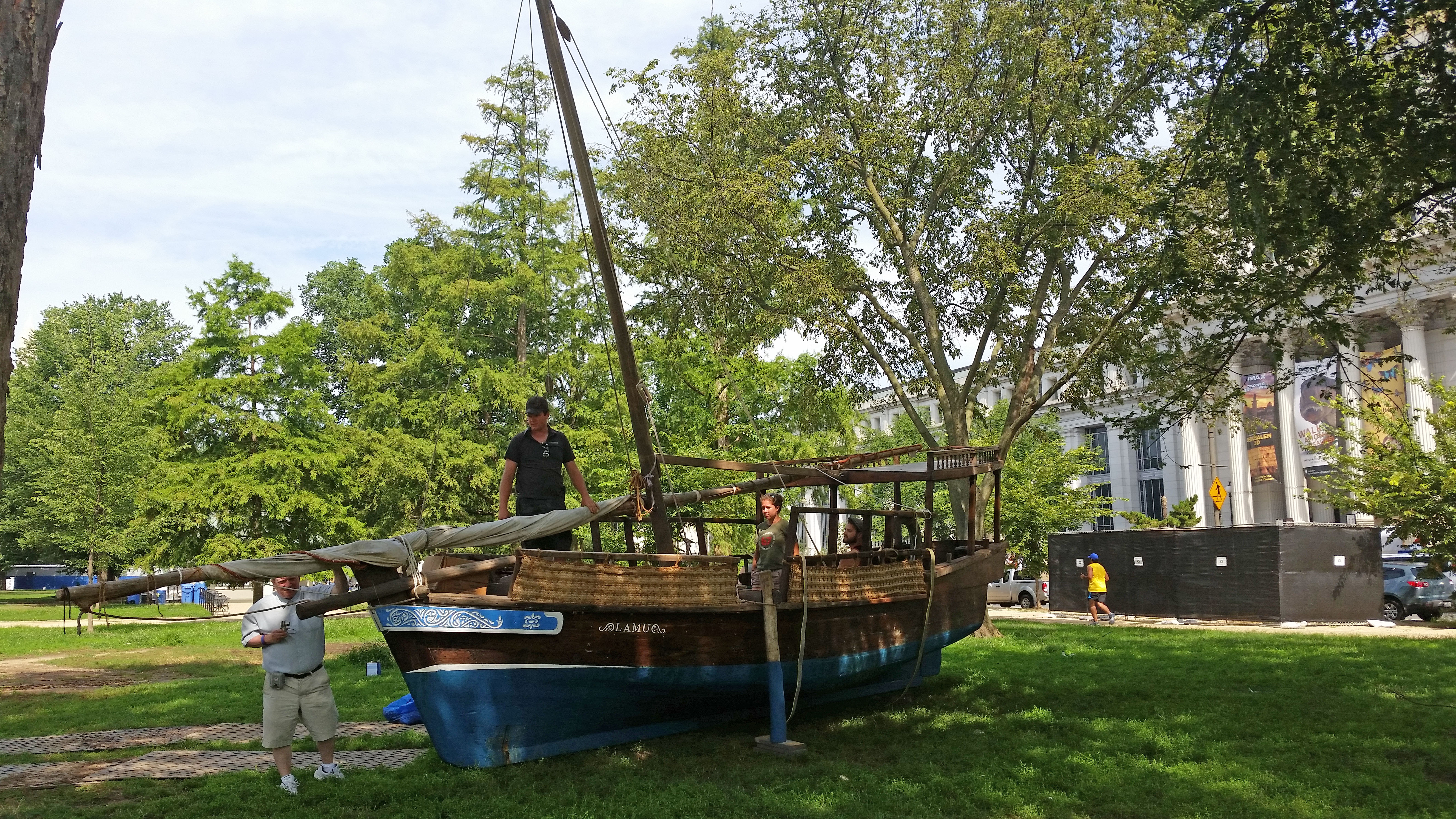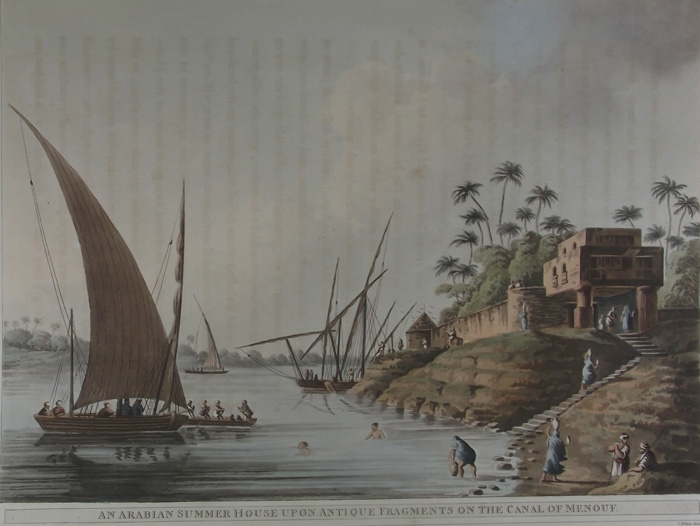A couple posts ago I mentioned that we had a new boat coming. Well, it’s here and I decided to feature it as the object of the month for August. She is a Kenyan dhow named Lamu.
Lamu was brought to Washington DC for the 2014 Folklife Festival all the way from Lamu Island, Kenya. The above photo shows her in the National Mall in DC, the National Museum of Natural History behind her. She was brought by Ali Abdalla Skanda, whose father built her about 10 years ago. While at the festival, Skanda and an assistant, Aly Baba, worked on fixing her up and finishing the painting and woodcarving. Skanda recognizes that dhows are not used as they once were (with the development of motorized boats) and so dedicates himself to continuing the art of dhow building (passed from generation to generation in his family) and preserving his culture.

Photo by Josh Weilepp, Ralph Rinzler Folklife Archives and Collections, Smithsonian Institution
As neither Kenya nor a vessel of this type is represented in our small craft collection, we jumped at the chance to obtain the dhow. It is currently visible in the back of our International Small Craft Center, but we have plans to showcase it in the front in the (hopefully) near future.
Before dealing with this boat, I had no idea what a dhow was, but I’ve come to learn that it is generally defined as “a group of ships used in East African, Arab, and Indian waters, whose main characteristic is the large lateen sail.” (Setting Sail: Ten Thousand Years of Seafaring Adventure by Luc Cuyvers, 2004) A lateen sail is one that is triangular in shape, as opposed to the square sail that was being used in the West. The print below shows an example of a dhow where you can clearly see the triangular sail.

As for the origin of the dhow, that remains uncertain. Many seem to think that the boats originate from the Arabs or Indians, but some think they may trace back to the Chinese. However these boats came to be, they have been a vital mode of transportation, carrying people and cargo around the seas. And that is why we are so glad to have one in our collection that we can use as an educational tool for many years to come!